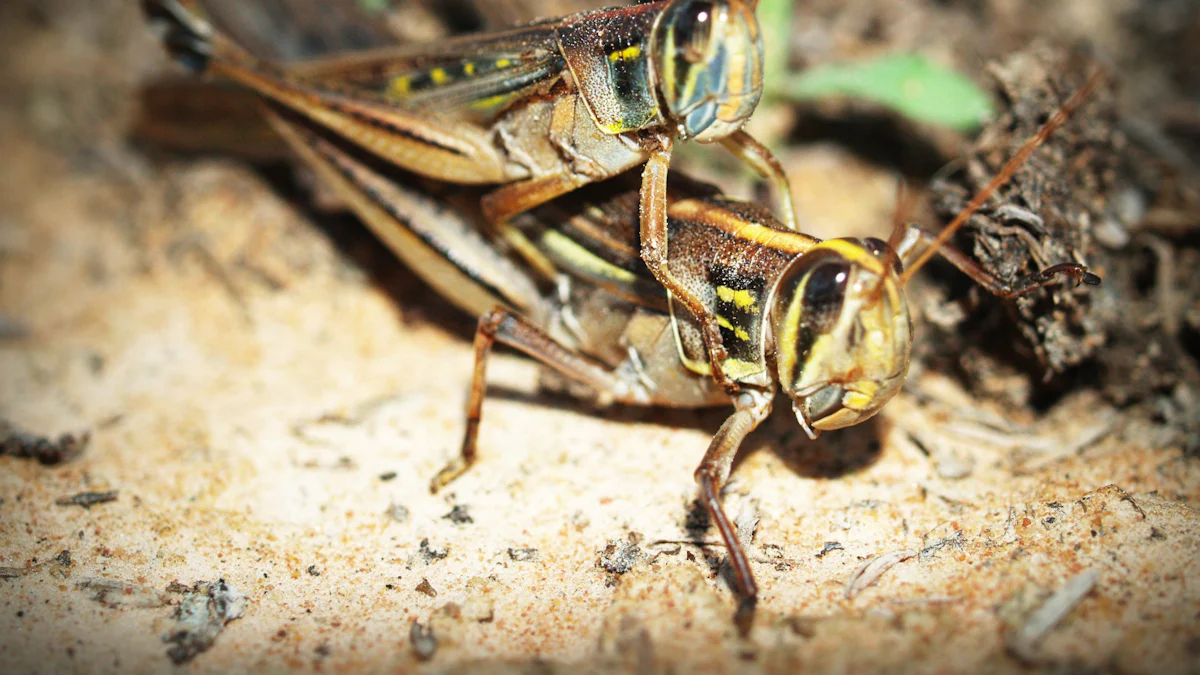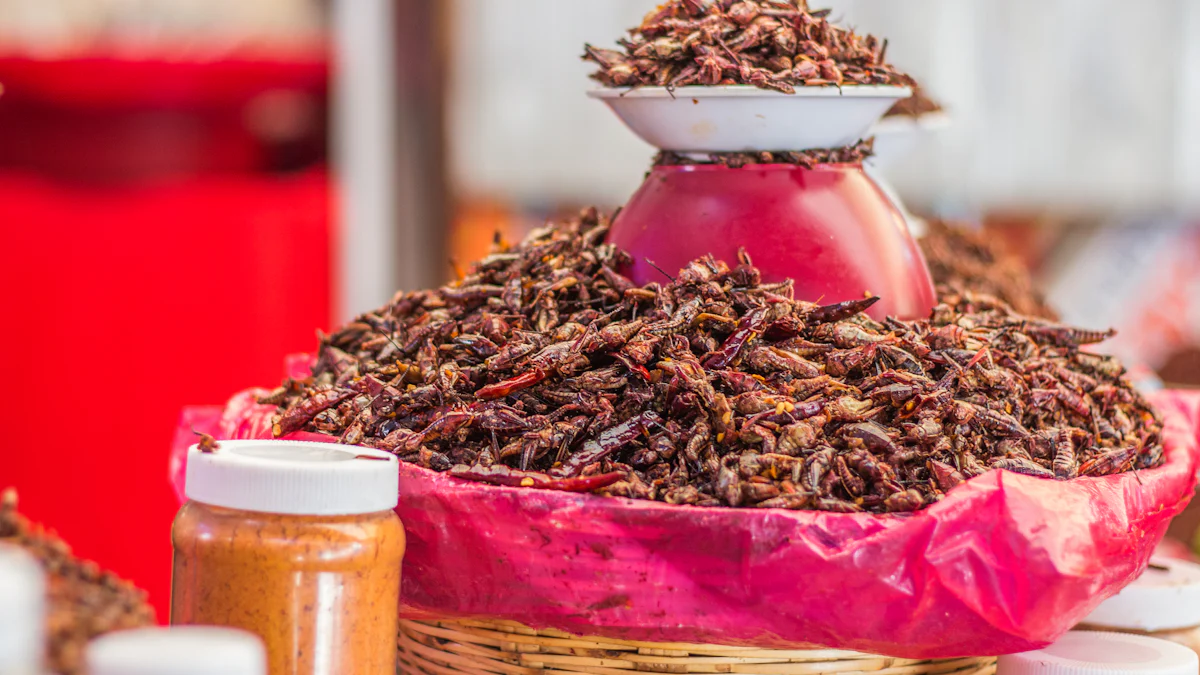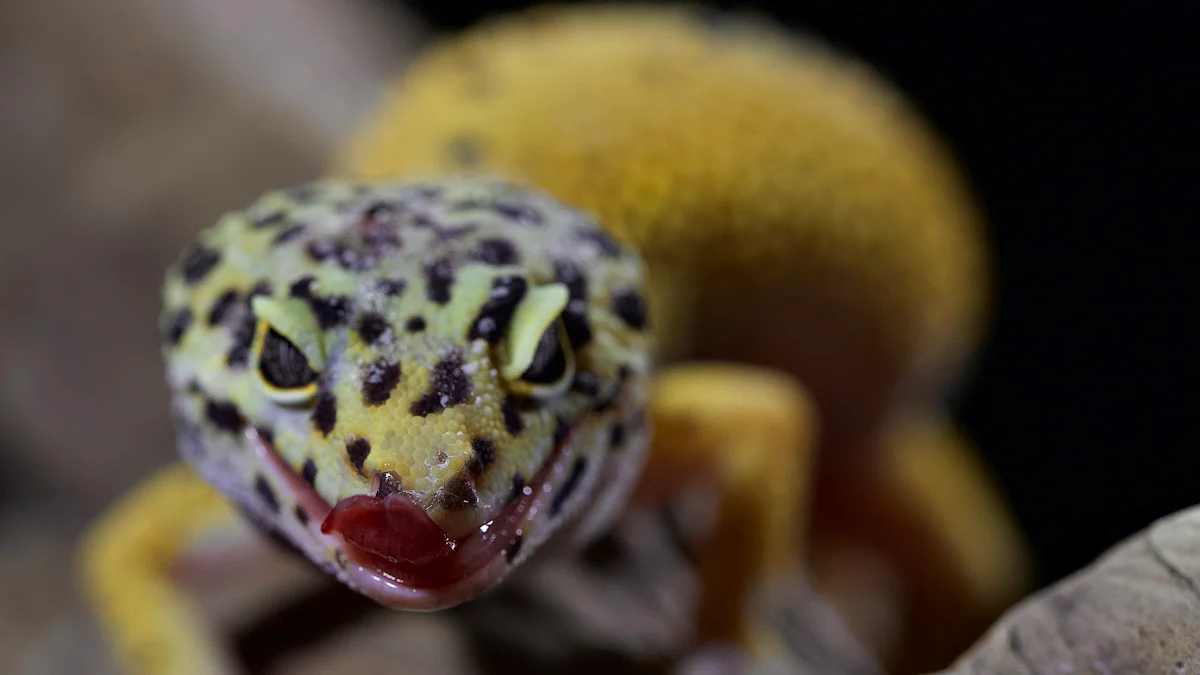
Leopard geckos thrive on live, moving prey that stimulates their natural hunting instincts. Freeze dried crickets, while convenient, fail to provide the essential hydration and movement that geckos need. These insects often lack the full nutritional profile required for their health. Feeding freeze dried crickets regularly can lead to serious issues like impaction or nutritional deficiencies. Most geckos even refuse to eat them because they don’t recognize non-living food as prey. For a healthy and happy gecko, live insects remain the best choice.
Key Takeaways
- Leopard geckos thrive on live insects, which stimulate their natural hunting instincts and provide essential hydration.
- Freeze-dried crickets lack moisture and nutrients, making them unsuitable as a primary food source for leopard geckos.
- Regularly feeding freeze-dried crickets can lead to serious health issues, including impaction and nutritional deficiencies.
- If using freeze-dried crickets, always rehydrate them and consider dusting with calcium or vitamin D3 to enhance their nutritional value.
- To encourage geckos to eat freeze-dried crickets, mimic movement with feeding tongs and mix them with live insects for gradual introduction.
- Freeze-dried crickets should only be used as a backup option in emergencies, not as a staple in a gecko’s diet.
Safety Considerations
Are freeze-dried crickets safe for leopard geckos?
Freeze-dried crickets may seem like a convenient option, but they aren’t the safest choice for leopard geckos. These reptiles rely on live prey to stimulate their natural hunting instincts. Without movement, freeze-dried crickets fail to capture their attention, leaving many geckos uninterested in eating them. Dr. Rassin, a veterinarian specializing in reptiles, explains that while some freeze-dried insects are pre-gut loaded, they don’t trigger a gecko’s hunting behavior. This lack of stimulation can lead to stress or reduced appetite over time.
Additionally, freeze-dried crickets lack moisture, which is essential for a gecko’s digestion. Dehydrated food can increase the risk of impaction, a condition where undigested material blocks the digestive tract. For these reasons, freeze-dried crickets should not be considered a primary food source for leopard geckos.
Potential risks of feeding freeze-dried crickets
Feeding freeze-dried crickets to leopard geckos comes with several risks. The most concerning issue is impaction. Since these crickets are dry and hard, they can be difficult for geckos to digest, especially if the gecko doesn’t drink enough water. Over time, this can lead to serious health problems that require veterinary intervention.
Another risk is nutritional deficiency. Freeze-dried crickets often lose some of their nutrients during the drying process. Even when gut-loaded before drying, they still don’t provide the same level of vitamins and minerals as live insects. A diet lacking in essential nutrients can weaken a gecko’s immune system and lead to long-term health issues.
Lastly, freeze-dried crickets don’t offer the enrichment that live prey provides. Hunting live insects keeps geckos active and engaged, which contributes to their overall well-being. Without this stimulation, geckos may become lethargic or stressed.
Why leopard geckos prefer live prey
Leopard geckos are natural hunters. In the wild, they rely on their keen eyesight and quick reflexes to catch moving prey. Live insects mimic this experience, making them more appealing to geckos. The movement of live prey triggers their hunting instincts, encouraging them to eat and stay active.
Freeze-dried crickets, on the other hand, remain motionless. Geckos often don’t recognize them as food, which can lead to frustration for both the pet and the owner. Even if a gecko does eat freeze-dried crickets, the lack of movement means they miss out on the mental and physical stimulation that hunting provides. For a happier and healthier gecko, live prey is always the better choice.
Nutritional Value

How do freeze-dried crickets compare to live insects?
Freeze-dried crickets and live insects differ significantly in terms of nutrition and overall benefits for leopard geckos. Live insects, such as crickets, mealworms, or dubia roaches, provide a more natural feeding experience. They retain their full moisture content, which helps with digestion and hydration. Additionally, live insects offer enrichment by encouraging geckos to hunt, keeping them active and engaged.
Freeze-dried crickets, on the other hand, are convenient and have a longer shelf life. However, the drying process can strip away some essential nutrients and vitamins. These crickets also lack moisture, making them less effective at supporting a gecko’s hydration needs. While freeze-dried crickets may seem like an easy option, they fall short when compared to the nutritional and behavioral benefits of live prey.
Do freeze-dried crickets meet a leopard gecko’s dietary needs?
Leopard geckos require a diet rich in protein, fat, and essential vitamins like calcium and vitamin D3. Live insects naturally meet these dietary needs, especially when gut-loaded with nutrient-rich foods before feeding. Gut-loading ensures that the gecko receives a balanced intake of nutrients, promoting strong bones, healthy skin, and overall vitality.
Freeze-dried crickets, even when pre-gut loaded, often lose some of their nutritional value during the drying process. The lack of moisture further reduces their effectiveness as a primary food source. Without proper hydration and supplementation, relying on freeze-dried crickets can lead to deficiencies over time. For this reason, they should only serve as an occasional backup rather than a staple in a gecko’s diet.
Why live insects are nutritionally superior
Live insects stand out as the best choice for leopard geckos due to their complete nutritional profile and natural appeal. They provide the necessary hydration that freeze-dried crickets lack, reducing the risk of digestive issues like impaction. Live prey also retains its full range of nutrients, ensuring that geckos receive the vitamins and minerals they need to thrive.
Moreover, live insects contribute to a gecko’s mental and physical well-being. The act of hunting stimulates their instincts, keeping them active and reducing stress. Freeze-dried crickets, while convenient, cannot replicate this experience. For a leopard gecko’s health and happiness, live insects remain the superior option.
Feeding Tips for Freeze Dried Crickets

How to prepare freeze-dried crickets for leopard geckos
Proper preparation of freeze-dried crickets ensures they are safer and more appealing for leopard geckos. These crickets lack moisture, so rehydrating them is essential. To do this, soak the crickets in clean, lukewarm water for a few minutes. This process softens the crickets and adds much-needed hydration, making them easier for geckos to digest. After soaking, pat the crickets dry with a paper towel to remove excess water.
When preparing freeze-dried crickets, consider dusting them with calcium or vitamin D3 powder. Leopard geckos require these nutrients to maintain strong bones and overall health. Use a small container to coat the crickets evenly by gently shaking them with the supplement powder. This step ensures the gecko receives the necessary nutrients that freeze-dried crickets alone may lack.
How to offer freeze-dried crickets to your gecko
Offering freeze-dried crickets to a leopard gecko requires some creativity since these reptiles prefer moving prey. After rehydrating the crickets, try using feeding tongs to mimic movement. Gently wiggle the cricket in front of the gecko to catch its attention. This technique can encourage the gecko to eat, even if it initially hesitates.
Start with a small portion to gauge the gecko’s interest. Offer only as many crickets as the gecko can consume within 15-20 minutes. Overfeeding can lead to digestive issues or leftover food spoiling in the enclosure. Monitor the gecko closely during feeding to ensure it eats the crickets and shows no signs of distress.
If the gecko refuses freeze-dried crickets, avoid forcing them. Instead, try mixing them with live insects to gradually introduce the new food. This approach can help the gecko adjust while still receiving the benefits of live prey.
Why freeze-dried crickets should only be a last resort
Freeze-dried crickets should not replace live insects in a leopard gecko’s diet. While they offer convenience and a long shelf life, they lack the hydration, movement, and full nutritional profile that live prey provides. Feeding freeze-dried crickets too often can lead to health problems like impaction or nutritional deficiencies.
These crickets are best used as an emergency backup when live insects are unavailable. For example, they can be helpful during travel or in situations where storing live prey is impractical. However, even in these cases, proper preparation and supplementation are crucial to minimize risks.
Leopard geckos thrive on a diet that mimics their natural hunting habits. Live insects not only meet their dietary needs but also provide mental stimulation and physical activity. Freeze-dried crickets, while convenient, should remain a secondary option to ensure the gecko’s long-term health and happiness.
Freeze-dried crickets are not an ideal primary food source for leopard geckos. They lack the hydration, movement, and essential nutrients that live insects provide. Leopard geckos thrive on live prey, which supports their natural hunting instincts and ensures proper nutrition. Freeze-dried crickets can only serve as a backup option in emergencies. When used, they must be rehydrated and supplemented with vitamins to minimize risks. Prioritizing live insects keeps geckos healthy, active, and happy. For long-term well-being, always choose live prey over freeze-dried alternatives.
FAQ
Can leopard geckos eat freeze-dried crickets regularly?
No, leopard geckos should not eat freeze-dried crickets regularly. These crickets lack the hydration and full nutritional value that live insects provide. Feeding them too often can lead to health problems like impaction or nutritional deficiencies. Freeze-dried crickets should only be used as an occasional backup when live prey is unavailable.
How often can freeze-dried crickets be offered to leopard geckos?
Freeze-dried crickets should only be offered sparingly, such as during emergencies or when live insects are temporarily unavailable. They should not replace live prey in a gecko’s diet. If used, ensure they are properly rehydrated and supplemented with vitamins to minimize risks.
Are freeze-dried crickets safe for leopard geckos?
Yes, freeze-dried crickets are generally safe in terms of being free from parasites and bacteria. However, they are not ideal as a primary food source. Their lack of moisture and reduced nutritional value can cause digestive issues and long-term health problems if fed frequently.
Do freeze-dried crickets need to be rehydrated before feeding?
Yes, rehydrating freeze-dried crickets is essential before feeding them to leopard geckos. Soaking them in lukewarm water for a few minutes adds moisture, making them easier to digest and reducing the risk of impaction. Always pat them dry after soaking to remove excess water.
What are the benefits of freeze-dried crickets?
Freeze-dried crickets offer convenience and a long shelf life. They are easy to store, require no maintenance, and eliminate the need for cleaning live insect containers. Additionally, they are free from parasites and bacteria, making them a safer option in certain situations.
Why do leopard geckos prefer live prey over freeze-dried crickets?
Leopard geckos are natural hunters and rely on movement to identify their food. Live prey stimulates their hunting instincts, keeping them active and engaged. Freeze-dried crickets remain motionless, which makes them less appealing and harder for geckos to recognize as food.
Can freeze-dried crickets cause digestive problems?
Yes, freeze-dried crickets can cause digestive problems like impaction. Their lack of moisture makes them harder to digest, especially if the gecko does not drink enough water. Proper rehydration and limited use can help reduce this risk.
How can I encourage my gecko to eat freeze-dried crickets?
To encourage a gecko to eat freeze-dried crickets, try rehydrating them and using feeding tongs to mimic movement. Gently wiggle the cricket in front of the gecko to catch its attention. Mixing freeze-dried crickets with live insects can also help introduce them gradually.
Are freeze-dried crickets nutritionally sufficient for leopard geckos?
No, freeze-dried crickets are not nutritionally sufficient on their own. The drying process reduces their vitamin and mineral content. Supplementing them with calcium or vitamin D3 powder is necessary to meet a gecko’s dietary needs, but live insects remain the superior choice.
When should freeze-dried crickets be used?
Freeze-dried crickets should only be used as a last resort. They are helpful during travel or when live insects are unavailable. Even in these cases, proper preparation, such as rehydration and supplementation, is crucial to ensure the gecko’s health and well-being.


